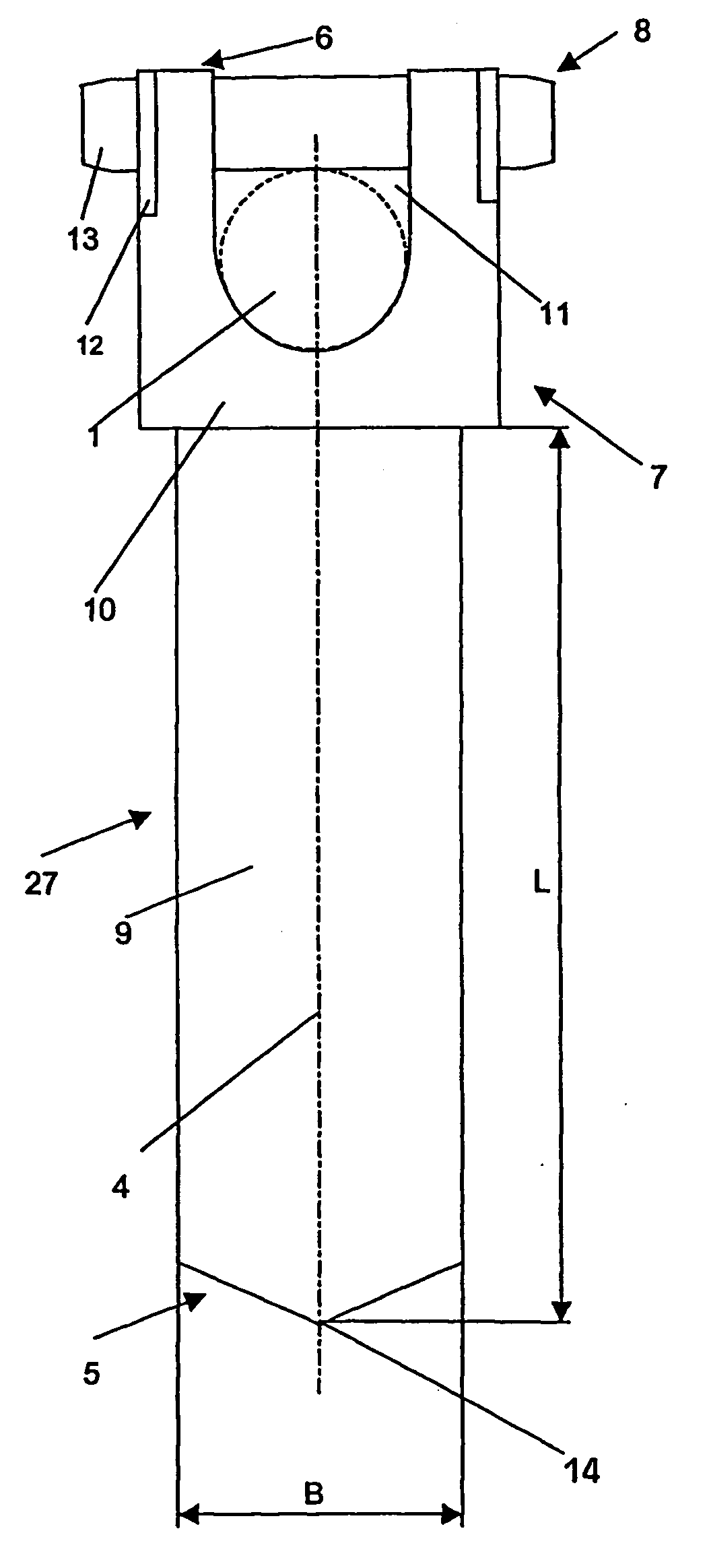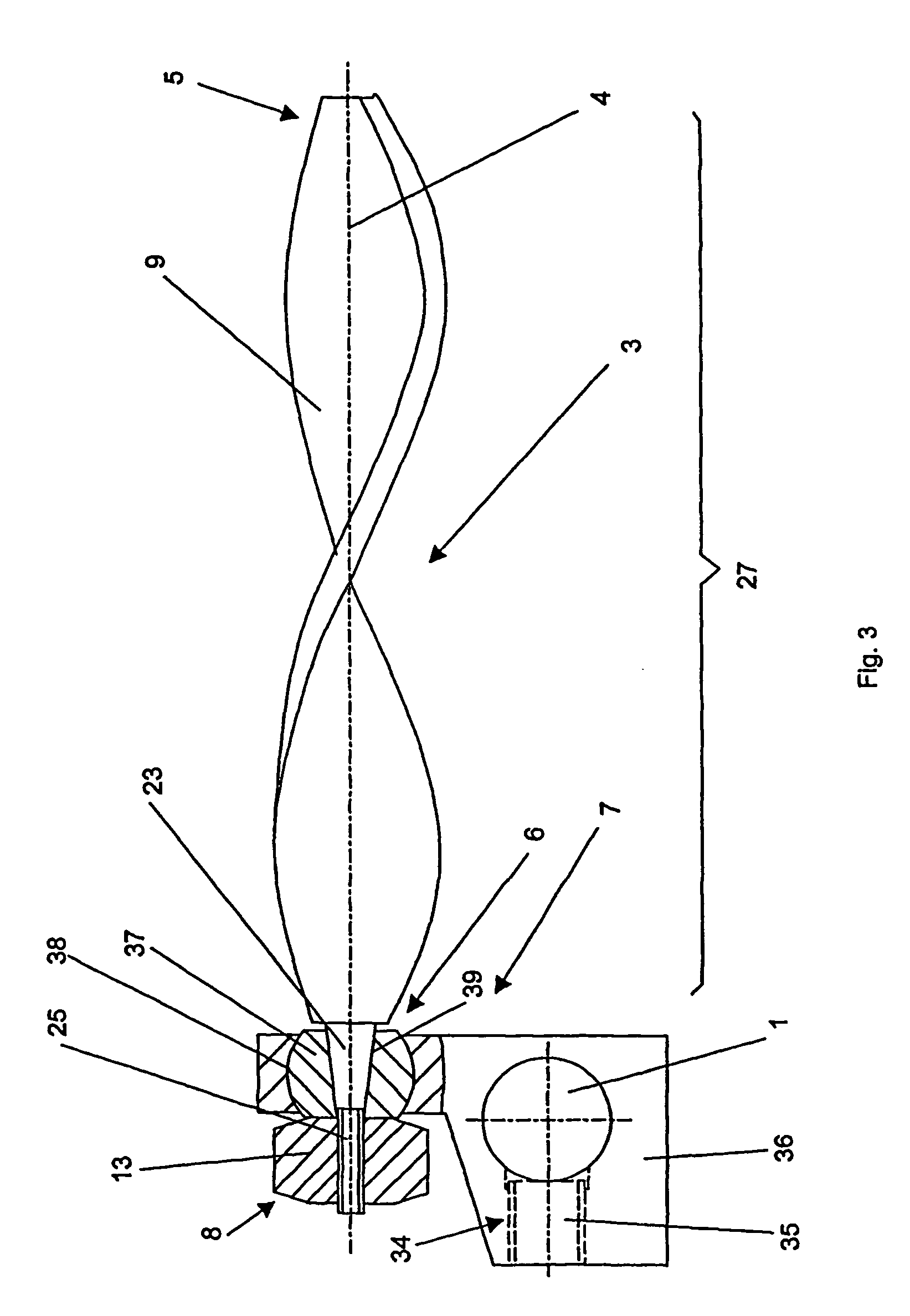Fixation device for bones
a fixation device and bone technology, applied in the field of orthopaedic fasteners, can solve the problems of difficult removal, impaired vascular supply to the bone left in the center, and greater danger of bone screws cutting through the bon
- Summary
- Abstract
- Description
- Claims
- Application Information
AI Technical Summary
Benefits of technology
Problems solved by technology
Method used
Image
Examples
Embodiment Construction
[0030]FIGS. 1 and 2 show an embodiment of the device according to the invention that comprises an anchoring element 3 with receiving means 7 for a longitudinal support 1 at the back end 6 of the anchoring element 3. The receiving means 7 consists of a receiving head 10 that is essentially circular-cylindrical and is coaxial with a longitudinal axis 4 of the anchoring element 3, with a channel 11 that is open toward the back end 6 to receive the longitudinal support 1. In this case, the longitudinal support 1 is received in such a way that its central axis 2 runs vertical to the longitudinal axis 4. In an area between the front end 5 and the receiving head 10, the anchoring element 3 contains an anchoring segment 27, which is designed as an essentially parallelepiped blade 9. Viewed vertically with respect to the longitudinal axis 4, the blade 9 has a rectangular cross-section with a width B and a thickness D. At the front end 5 of the anchoring element 3, the width B of the blade 9 ...
PUM
 Login to View More
Login to View More Abstract
Description
Claims
Application Information
 Login to View More
Login to View More - R&D
- Intellectual Property
- Life Sciences
- Materials
- Tech Scout
- Unparalleled Data Quality
- Higher Quality Content
- 60% Fewer Hallucinations
Browse by: Latest US Patents, China's latest patents, Technical Efficacy Thesaurus, Application Domain, Technology Topic, Popular Technical Reports.
© 2025 PatSnap. All rights reserved.Legal|Privacy policy|Modern Slavery Act Transparency Statement|Sitemap|About US| Contact US: help@patsnap.com



